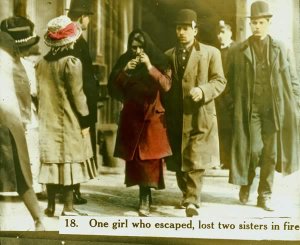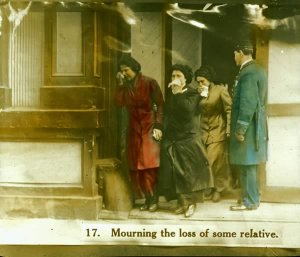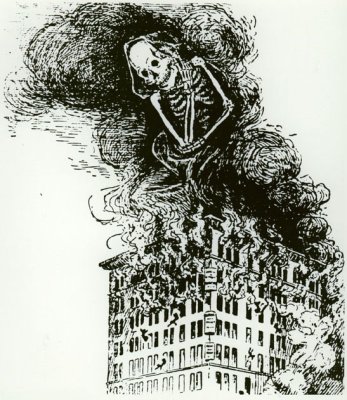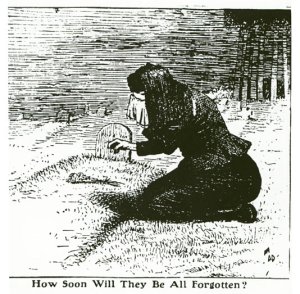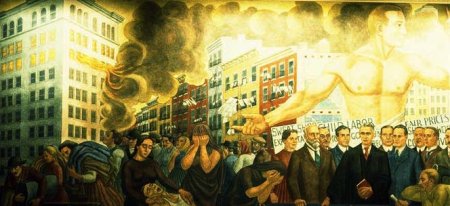Libertarians Against Property Rights: “You Will Be Assimilated” Edition
Over at Positive Liberty, Timothy Sandefur and Jason Kuznicki seem intent on retreading an argument over immigration that I last saw in the clash of the fascists between Sam Huntington and David Brooks almost exactly two years ago. Here’s Sandefur, who apparently believes that he’s explaining a problem:
The illegal immigration problem is so severe in Southern California that it is difficult for people elsewhere in the country, including even Northern Californians, to really understand what's going on. Whole areas of Southern California are now virtually Mexico. The population of illegal immigrants is enormous, and climbing steadily, at the rates of at least hundreds per day.
— Timothy Sandefur, Positive Liberty (2006-03-30): Illegal Alienation
I’m still waiting to find out what the problem is, but Sandefur apparently believes he’s intimated at least part of it just by telling us that parts of Southern California are now, in some unspecified sense, like Mexico. (Well, so?)
Here’s what Sandefur takes to be the most serious objection to Mexicans moving in without permission slips from the federal government:
The most serious, to me, is philosophical. You cannot have a free society among people who do not understand the cultural and philosophical framework of freedom. Allowing people into a nation who do not identify themselves as part of that nation–who do not speak the language, who do not observe the holidays, who do not know or care about the history and ideals and cultural icons–is simply suicidal.
— Timothy Sandefur, Positive Liberty (2006-03-30): Illegal Alienation
Of course, it is almost certainly true that freedom requires a certain cultural and philosophical framework, and it would be good if everybody adhered to it. But I’m baffled by the suggestion that speaking the prevalent language, observing the prevalent holidays, or knowing or caring about the history and ideals and cultural icons of whatever country you intend to move to are essential parts of that cultural and philosophical framework. There’s no special affinity between liberty and monolinguism, between freedom and observing any particular theo-nationalist liturgical calendar, or between autonomy and being interested or well-versed in any particular part of the history of the foreign land that you are moving to. (I’d suggest, if anything, that having to negotiate many different languages, many different cultures, many different understandings of history and pop culture, can be just as conducive to freedom, if not more conducive to freedom, as any sort of constructed nationalism.)
But this is ultimately beside the point anyway. Even if failing to learn English was a dreadful threat to the prospects of liberty; even if not celebrating Veterans’ Day or Flag Day or Arbor Day were an ominous step towards totalitarianism, it would provide absolutely no justification whatever for using force to stop people from traveling to property where they are welcomed by the owner (either out of hospitality, or because they pay rent, or because they are prepared to buy it for themselves). Certain kinds of bad thoughts may very well be corrosive to liberty, but there’s no libertarian justification in restraining, beating, shooting, detaining,
jailing, or exiling somebody just for having bad thoughts. Neither you nor the government has any right to force people off of property onto which they have been invited, even if you think that their presence is a looming danger to the future of liberty in America, unless they have actually done or threatened real violence to somebody else. Vices are not crimes, and only crimes can justly be resisted by force.
That argument seems simple, and obvious. So why don’t more advocates of immigration just stick to their guns and make it? Perhaps it’s understandable that non-libertarians don’t make it, but what about libertarians? Why does Kuznicki take this to be the most natural line of response to Sandefur?

Freedom is irrelevant. Assimilation is inevitable.
Subsequent evidence runs against Jefferson's prediction. The United States has absorbed substantial waves of Irish, East European, and East Asian immigrants, none of whom came from countries or cultures that habituated them to freedom. Many spoke little or no English and were almost wholly ignorant of the American system. Yet after a generation or two — and often much sooner — they turned out pretty much like any other group of Americans.
What we are experiencing now is entirely within the bounds of the demographic precedents set by these other groups: As a proportion of the general population, the number of immigrants today is roughly on par with levels that we have experienced in the past, as this (intentionally?) misleading graph actually demonstrates quite well (hint: look at the percentages).
Given the demographic similarities and historical precedents, I have little reason to fear that Latinos will somehow be different — unless, that is, we give them incentives not to assimilate.
— Jason Kuznicki, Positive Liberty (2006-03-30): How I’d Reform Immigration
What legitimate reason has the United States government to care whether or not Latin@s assimilate or don’t assimilate? What legitimate reason have we got to make the decision whether or not to use force to stop immigrants (or to exile them from their current homes) on the basis of whether or not they are willing to assimilate
to the surrounding culture? Maybe they will and maybe they won’t; but whatever the virtues or vices of declining to assimilate, it’s not a hanging crime, and neither you nor anybody else has the person to destroy a person’s livelihood, clap them into irons, and force them back out of the country over it. Neither you, nor anybody else, has the right to harass, shove, restrain, beat, or shoot people to stop them from entering the country over it. The only issue here is the freedom of movement of the immigrant, and the property rights of whoever owns the property where the immigrant is staying. (If the immigrant is trespassing, of course, there are already laws against that; it has nothing in particular to do with immigration.) Sandefur, for his part, thinks he has a reply to this. Here it is:
First, it must be kept very clear that no person has a natural right to enter another country against the will of those citizens. A person has a natural right to leave his [sic] own country, no doubt. But a political society is an agreement among people for purposes of the common defense, and the people therefore have the right to decide whether or not to allow others in. So long as they do not make that decision on an arbitrary basis, they have the right to refuse to extend citizenship or entry to others if they wish. So no person has the right to force his [sic] way into the another nation and demand to be accepted.
— Timothy Sandefur, Positive Liberty (2006-03-30): Illegal Alienation
If Sandefur were right about this, it would provide a basis for taking things like assimilation
into account when you’re setting immigration policy. If it were a matter of resisting people trying to force her way in
against the will of people who have a right to keep them out, then you might very well think that any number of factors might be good reasons for stopping them rather than letting them in.
But he’s not right; that’s not what this is about. The appeal is nothing more than overt, garden-variety political collectivism, which tricks itself out in a few of the rhetorical cadences of property rights while actually assaulting those property rights in the name of collective coercion of innocent individual people. Sandefur would have The People decide whether or not to allow others in,
but in a way that systematically denies individual people the right to decide whether or not to allow others in to their own property. Of course, there is no natural right to enter another person’s land against the will of that person (that’s just trespassing). But I take it we’re not talking about trespassing law here. We’re talking about an immigrant who’s made arrangements for a place to stay with a willing landlord — through the hospitality of people she knows, or by paying rent for the space, or by buying it for herself from the previous owner. Who is, therefore, welcomed by the owners of the property. The only people deciding not to allow
her in are, ex hypothesi, people other than the owners, third parties — nativist voters, opportunistic legislators, La Migra, or whoever else — who think that force of numbers or the writ of The Law gives them some kind of right to impose their decisions on other people’s property.
There are political theories that would approve of this kind of bullying and coercion — as long as it had the right majoritarian or authoritarian backing. But libertarianism is not one of them. If I invite a Mexican worker into my home, she or he has got a right to stay there as long as I (and my landlord) permit it. If a local factory gives her a job, she’s got a right to work there as long as she and the employer want her to continue. If she’s happy to keep speaking Spanish and I’m happy to let her stay without speaking English, then she still has a right to stay. If she’ll work on Dead Prez Day and the factory is happy for her to work on it, then she still has a right to stay. There is no way for La Migra to butt in, whether she is willing to assimilate
or not, without mounting an assault on both her and on my rights to do as I please with my own home, or the factory’s rights to hire whom they please. Whether or not Mexican workers are interested in assimilating
to any particular local culture is interesting only as an empirical question, a matter of idle sociological curiosity. It has absolutely no bearing on the question of right, because your ideas about culture don’t trump my right to my own land, and they don’t trump her life, liberty, or livelihood. Period.
When the topic is immigration policy, please just shut up about cultural assimilation. Whether it is happening or not, and whether it ought to happen or not, it is completely irrelevant to the course of (in)action that the government ought to pursue.
Further reading:
- GT 2004-03-22: Freedom is irrelevant. Assimilation is inevitable.
- Comment (2006-03-27) on Wizbang: Criminals threaten to strike: why is this considered bad?, on
the fundamental issue in all this.
